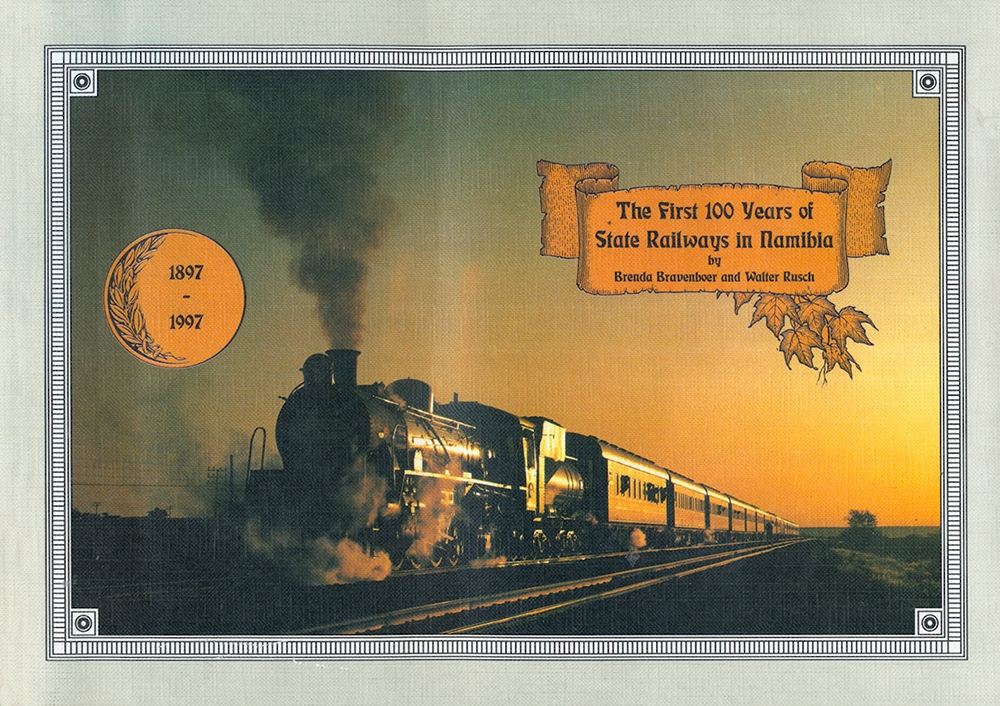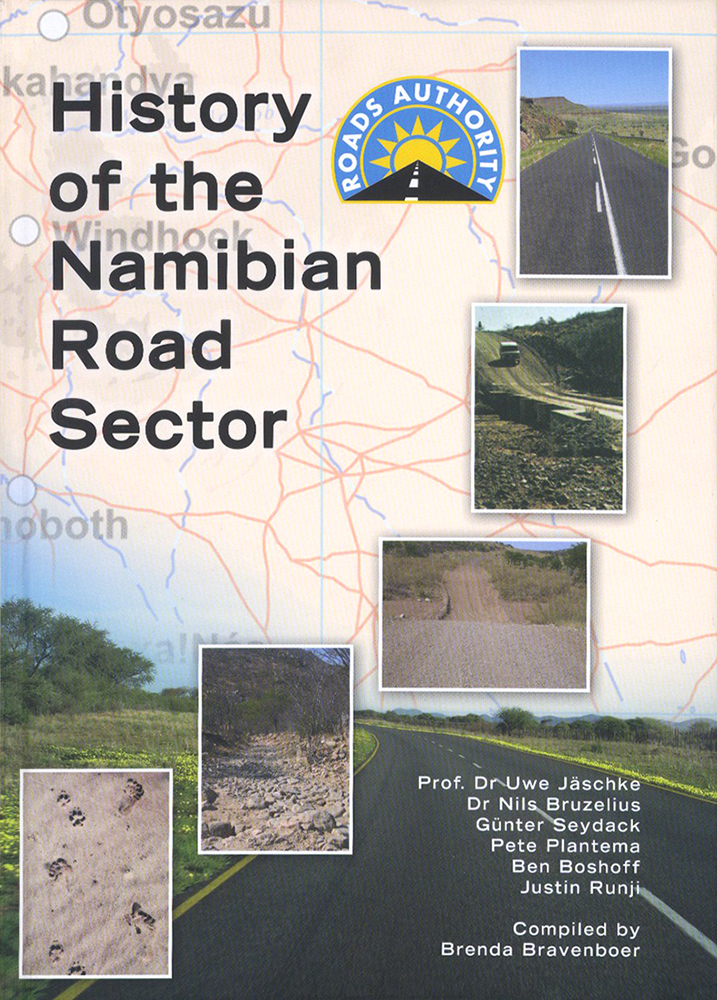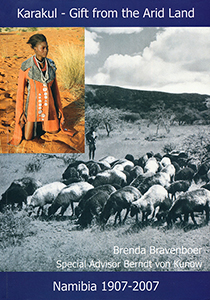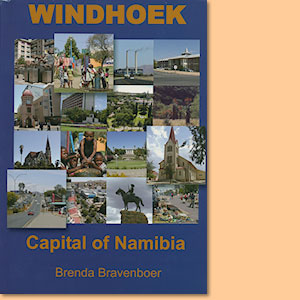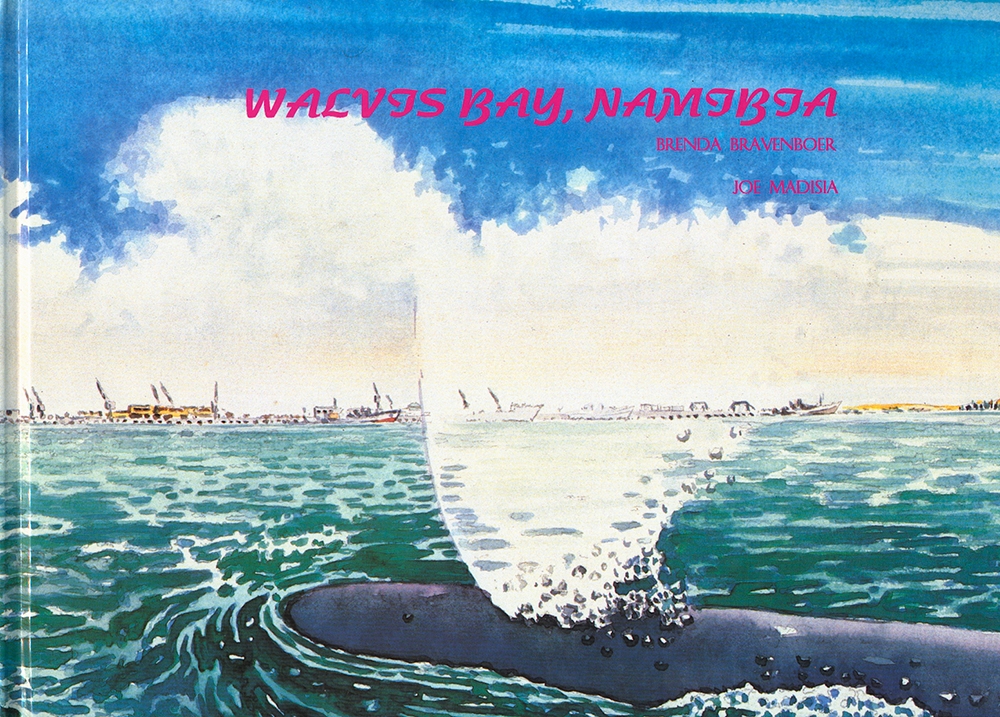The first 100 years of State Railways in Namibia, by Brenda Bravenboer and Walter K. E. Rusch
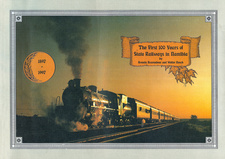
The first 100 years of State Railways in Namibia, by Brenda Bravenboer and Walter K. E. Rusch. TransNamib Museum. First edition. Windhoek, Namibia 1997. ISBN 0869764012 / ISBN 0-86976-401-2
This chapter from The first 100 years of State Railways in Namibia, by Brenda Bravenboer and Walter K. E. Rusch, introduces to the Otavi Minen- und Eisenbahn-Gesellschaft, 1900.
The origin of this railway line ranged back to 1892 when the South West Africa Company was granted the "Damaraland Concession" by the German government. In 1892 an expedition was sent to make a study - the one group under the leadership of Mathew Rogers was to investigate mining possibilities - and the other group under D. Angus, was to investigate a rail route from Otavi to the coast. The unrest could be felt among the Herero tribesmen who harassed the members of the mining expedition with their threatening attitude. After the research expedition had established that the rich ore deposits justified the building of a railway line from the mine to the coast this group left the country in July 1893. The SWA Co. in England did not make any further effort to exploit their mineral rights within the territory until 1900 when they sent a party of 33 persons under the leadership of geologist Christopher James to look over the copper deposits in the Tsumeb area. Dr G. Hartmann, the Director of the SWA Co. in Grootfontein and the Norwegian engineer T. Tonnesen separately undertook explorations to the west coast to probe possible harbour sites and rail routes. A survey was done from Tiger Bay and its surrounding area up to the Kunene River in the Portuguese territory of Angola and from there the area in the German territory up to Otavi. A second possibility was that of a railway line from Otavi through the Kaokofeld to the Khumib River mouth and further to Angra Fria on the west coast of German South West Africa. Another proposal was a railway line connection from Port Alexander in Portuguese territory with a crossing over the last cataract of the Kunene and on to the mining area in German territory. Dr Hartmann then also investigated the possibility of a connection with the Staatsbahn at Karibib. The suggestions and recommendations made included the building of a standard gauge railway line (1,067 millimetres). The idea was that at a later date the railway could be extended into Southern Rhodesia (Zimbabwe) and connect with the railways there to form part of a trans-Africa route. The cost of the investigation regarding the possible railway routes and mining deposits came to over 500 000 Reichsmark. Considerations which discouraged the SWA Co. from accepting these proposals were: the total cost, engineering difficulties, and the fact that at that time there was a slump in the copper price on the world market. The South West Africa Company in 1899 entered into negotiations with the Disconto-Gesellschaft in Berlin, Germany and the Exploration Co. Ltd in London to form a new company which would exploit the rich copper deposits at Otavi. The new company was formed on 6 April 1900 and would be known as the Otavi Minen- und Eisenbahn-Gesellschaft (O.M.E.G.). Now with German capital involved, the SWA Co. demonstrated their prudence by allowing 55 per cent of its £1 000 000 capital stock to be retained by German nationals, a large enough percentage to ensure the protection and cooperation of the colonial government. With this, the SWA Co. turned over its mining, freehold and proposed railway rights to the O.M.E.G. However, the primary interest of the company lay in mining copper and not in the operation and running of a railway. Any railway that the company built would be exclusively for its own use and the logical route would be one directly to the coast. The importance of building a well constructed line which could be maintained and operated over many years was absolutely necessary. With this in mind, O.M.E.G. appointed the firm Arthur Koppel & Co. of Berlin to build the railway line from Swakopmund to Tsumeb. Arthur Koppel & Co. immediately sent their own survey team to German South West Africa to work out a preliminary route. They in turn recommended that a railway with a gauge of 600 millimetres be constructed from Swakopmund in more or less a direct line via Omaruru and Otavi to Tsumeb. Such a railway line could without much difficulty, be constructed at a reasonable cost and would be able to handle all the traffic to and from the mines for years to come. Another point in favour was that the line would not cross any international boundaries - thus, in the event of Germany becoming involved in any conflict, it would not effect mining operations. The report also strongly recommended that the entire railway be built and run independently as the restricted axle loads which were necessary on the Staatsbahn would not take the loads from the mines. A contract signed with Arthur Koppel & Co. included the construction of the railway line and the railway equipment necessary for its operation. With the contract signed, chief engineer Solioz and his workforce arrived in Swakopmund at the end of August 1903 to do the preliminary work. [...]
This is an excerpt from The first 100 years of State Railways in Namibia, by Brenda Bravenboer and Walter K. E. Rusch.
Titel: The first 100 years of State Railways in Namibia
Authors: Brenda Bravenboer; Walter K. E. Rusch
Copyright Brenda Bravenboer & Walter K.E. Rusch
Editor: Cathrine Hoff
Publisher: TransNamib Museum
First edition. Windhoek, Namibia 1997
ISBN 0869764012 / ISBN 0-86976-401-2
Original softcover, 20 x 21 cm, 450 pages, numerous b/w photos, maps
Bravenboer, Brenda und Rusch, Walter K. E. im Namibiana-Buchangebot
The first 100 years of State Railways in Namibia
This comprehensive and rare book surveys Namibia's railway history over the past 100 years before 1997.
History of the Namibian Road Sector
This an impressive, most interesting documentation of history and developement of the Namibian road sector.
Karakul. Gift from the Arid Land Namibia 1907 - 2007
This magnificent book, Gift from the Arid Land, introduces to history of the Karakul industry in Namibia (1907-2007).
Walvis Bay, Namibia (deutsche Ausgabe)
Die Ortsgeschichte und landeskundliche Besonderheiten Walvis Bays in Namibia, die ist die deutsche Ausgabe.

